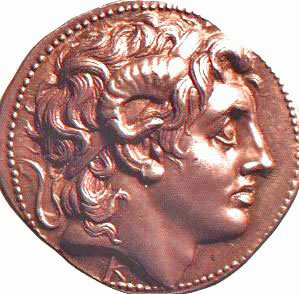 |
| Rooma Capitol vasemmalla kolme pylvästä Vespasianus, Titus, keskellä Septimus Severuksen triumfikaari oikealla Saturnuksen temppelin rauniot kuva wikimedia |
Anonyymi kommentoi joulun ajankohtaa esittäen useampia teesejä, jotka mielestäni ovat kaikki asiallisesti virheellisiä. Olen lisännyt numerot:
"1. Saturnalia ei ollut mikään auringon juhla, vaan roomalaisella seudulla vietetty sadonkorjuujuhla.
2. Se on siis roomalainen vastine juutalaisten lehtimajajuhlalle.
3. Ja sen ajoitus on satokauden päätteeksi.
4. Aurinkoa ei Saturnaliassa juhlittu, vaan satoa,
5. ja sadonkorjuun jumalaa roomalaisessa uskomusmaailmassa edustanutta Saturnusta.
6. Saturnushan tarkoittaa suomeksi satoa.
7. Auringon juhlinta on eri asia. Sitäkin roomalaiset tekivät, mutta pääasiassa syksyllä."
Anonyymi
1. Annan alempana Saturnalia juhlasta lainauksen, jossa annetaan siitä tietoa. Lue koko artikkeli.
2. Sekavuus Sukkot eloi lehtimajanjuhlista on aika perustava, sillä ei ole Raamatussa mitään tekemistä sadonkorjuun kanssa vaan se on Egyptistä lähdön muistamista. Sadonkorjuun juhla on sadonkorjuun aikaan Raamatun Israelissa loppukeväästä, Shavuot viikkojuhla, joka on kristittyjen helluntai.
(Antiikin roomalaisten näkemyksien väärinkäsitykseen voi vaikuttaa se, että on säilynyt roomalaisen historioitsijan kuvaus lehtimajanjuhlista Jerusalemissa, jossa hänellä ei ole mitään todellista käsitystä, mistä tässä juutalaisten juhlassa on kysymys.)
3. Roomassa maanviljely oli syvästi arvostettu asia ja ylimystö tahtoi omistaa maatiloja. Tuotannon perusta on leipävilja, jonka lisäksi tietenkin viini ja monet muut viljelykasvit. Italiassa samoin kuin Raamatun ajan Israelissa eletään Välimeren luonnon rytmissä, ja maanviljelijät vievät siemenet peltoon syksyllä sateita toivoen. Satokauden päätös eli elonkorjuun iloinen aika on loppukeväästä touko-kesäkuussa, Roomassa joskus vielä heinäkuussakin satoa korjattiin. Juutalaisten suuri sadonkorjuun juhla on Shavuot, kristittyjen helluntai. Esimerkiksi viinirypäleet sen sijaan kypsyvät elo-syyskuussa.
4. Annan tekstin tästä alempana.
5. Saturnalia on Saturnuksen juhla.
Saturn (Latin: Saturnus) was a god in ancient Roman religion, and a character in myth. Saturn is a complex figure because of his multiple associations and long history. He was the first god of the Capitol, known since the most ancient times as Saturnius Mons, and was seen as a god of generation, dissolution, plenty, wealth, agriculture, periodical renewal and liberation. In later developments he came to be also a god of time. His reign was depicted as a Golden Age of plenty and peace. The Temple of Saturn in the Roman Forum housed the state treasury. In December, he was celebrated at what is perhaps the most famous of the Roman festivals, the Saturnalia, a time of feasting, role reversals, free speech, gift-giving and revelry. Saturn the planet and Saturday are both named after the god.Saturnus on siemenen ja kylvön jumaluus, ei niinkään sadonkorjuun. Tosin uskottiin, että muinaisena Kultaisena Aikana, jota saturnalia juhlassa muisteltiin, hän opetti ihmisille maanviljelyn. Lauantai on Saturday Saturni dies.
wikipedia
Saturn, Latin Saturnus, in Roman religion, the god of sowing or seed. The Romans equated him with the Greek agricultural deity Cronus.
Saturn’s cult partner was the obscure goddess Lua, whose name is connected with lues (plague, or destruction); but he was also associated with Ops, another obscure goddess (perhaps the goddess of abundance), the cult partner of Consus, probably a god of grain storage.
In Roman myth Saturn was identified with the Greek Cronus. Exiled from Olympus by Zeus, he ruled Latium in a happy and innocent golden age, where he taught his people agriculture and other peaceful arts.
Saturn’s great festival, the Saturnalia, became the most popular of Roman festivals, and its influence is still felt in the celebration of Christmas and the Western world’s New Year. The Saturnalia was originally celebrated on December 17, but it was later extended to seven days. It was the merriest festival of the year: all work and business were suspended; slaves were given temporary freedom to say and to do what they liked; certain moral restrictions were eased; and presents were freely exchanged.
The weekday Saturday (Latin Saturni dies) was named for Saturn.
Encyclopaedia Britannica
6. Latinan sana Saturnus tulee etruskien kielestä eikä sen merkitystä tiedetä.
7. Katso oheinen lainaus
Saturnalia
Although probably the best-known Roman holiday, Saturnalia as a whole is not described from beginning to end in any single ancient source. Modern understanding of the festival is pieced together from several accounts dealing with various aspects.
The Saturnalia was the dramatic setting of the multivolume work of that name by Macrobius, a Latin writer from late antiquity who is the major source for information about the holiday. In one of the interpretations in Macrobius's work, Saturnalia is a festival of light leading to the winter solstice, with the abundant presence of candles symbolizing the quest for knowledge and truth.
The renewal of light and the coming of the new year was celebrated in the later Roman Empire at the Dies Natalis of Sol Invictus, the "Birthday of the Unconquerable Sun," on December 25.
wikipedia
Aukusti....
Muistutan vielä, että kyseessä on myöhäisantiikki ja aurinkojumala Solin nousu suosioon Rooman hovissa 200-luvulla jKr.
Yhteys Kristuksen ja Sol invictus välillä oli niin vahva, että kirkkoisä Augustinus joutui asiaan puuttumaan 400-luvun taitteessa "Kristus ei ole Sol"










.jpg/800px-Dacha_in_Resheti_(4116129180).jpg)
